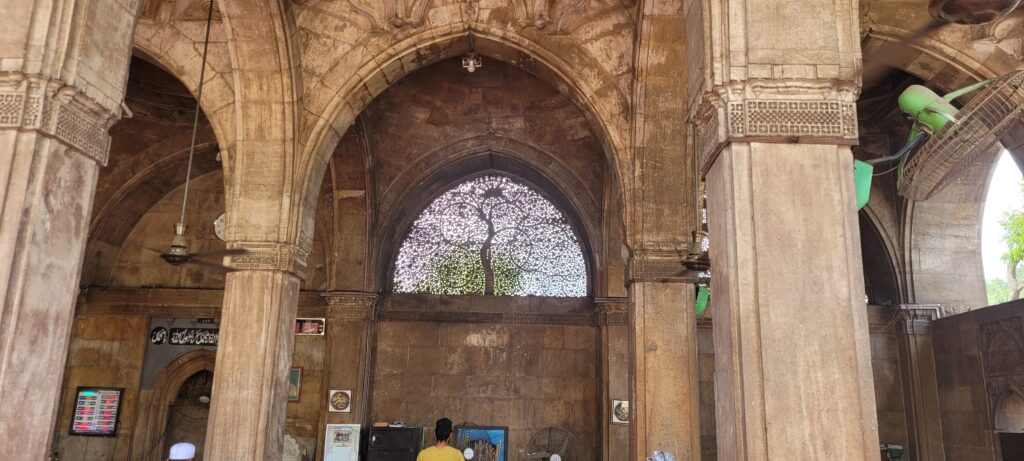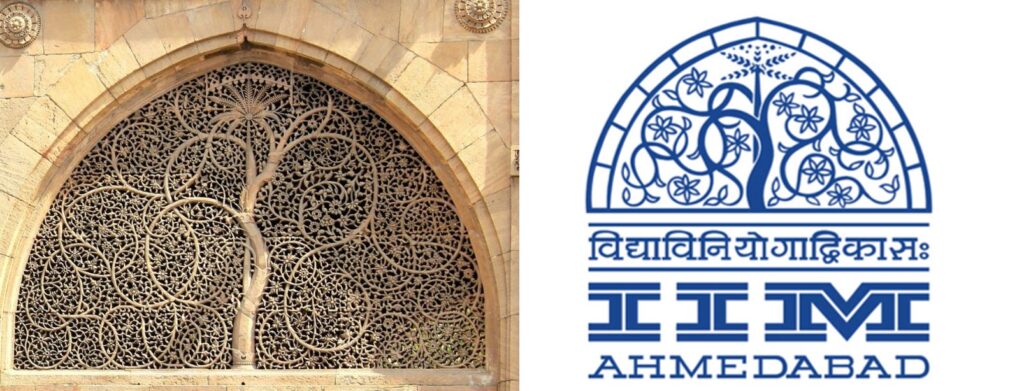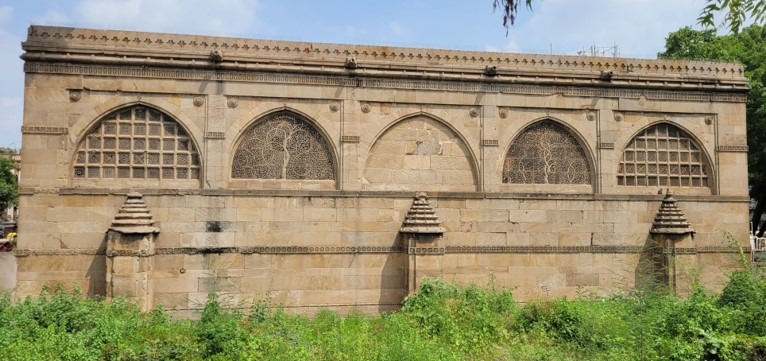The Sidi Saiyed Mosque in Ahmedabad was built between 1572-73 by Sidi Saiyed, a Habshi nobleman. Habshis are people from Abyssinia, which is modern-day Ethiopia.
Long before the trade between Africa’s east coast and India’s west coast flourished, many Habshis were brought to India as slaves, often for military service. Some, like Malik Ambar of the Deccan, rose to prominence.

By the 16th century, the Gujarat Sultanate relied heavily on Africans for its army. Sidi Saiyed served under Sultan Mahmud Shah and later distinguished himself in military service alongside Amir Jhujhar Khan. After a period of instability, Sidi Saiyed settled near this mosque, converting an older brick structure into what we see today. He also built a public kitchen to feed the poor and lived out his final years as a pious man, passing away in 1576.

The jali work on one of the windows, which inspired the emblem of IIMA
Completed just before Akbar conquered Gujarat, the Sidi Saiyed Mosque is a masterpiece of Gujarat Sultanate architecture, known for its intricate stone jaalis that resemble delicate lacework. One of the jaalis on the windows of this mosque even inspired the logo of IIM Ahmedabad. The jaali features a tree-of-life motif with fronds spreading out at the top.
This mosque, located in the center of Ahmedabad, is one of the must-visit sites in Ahmedabad. It still functions as a place of prayer.



